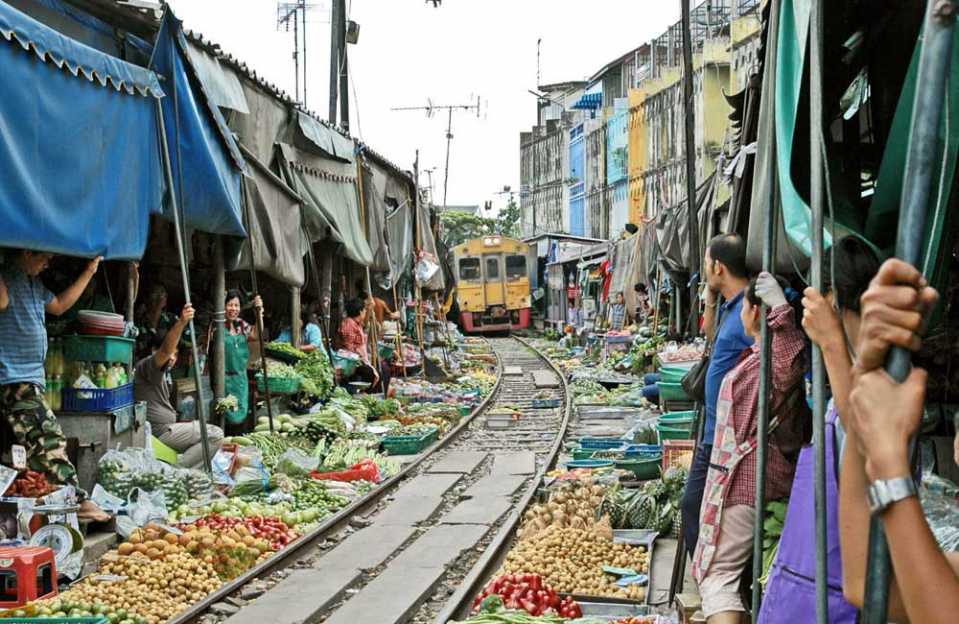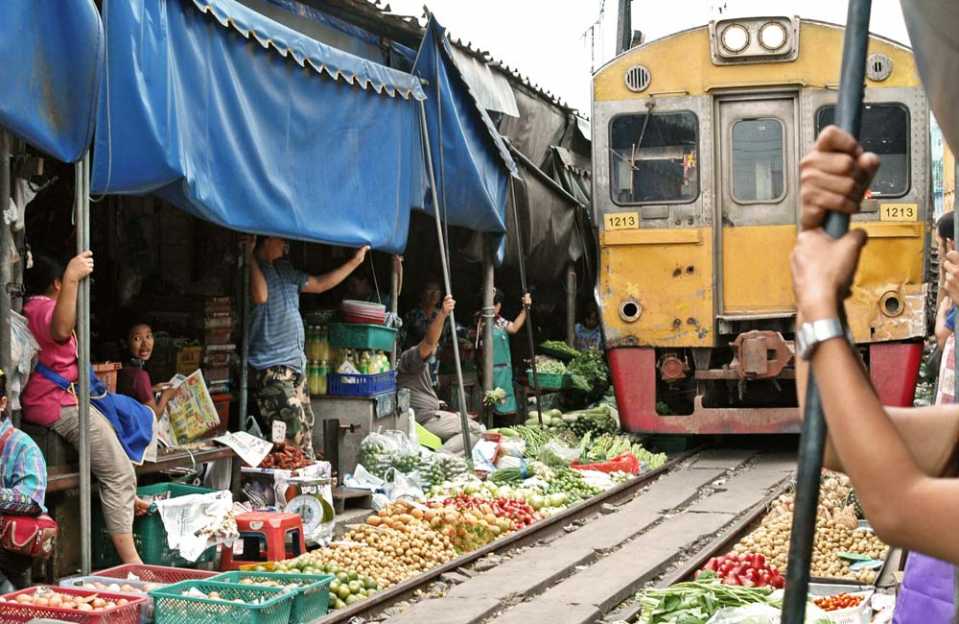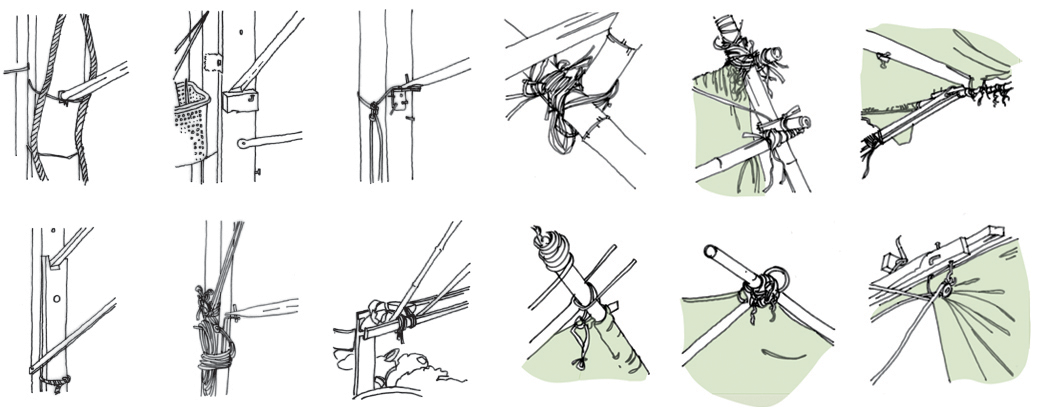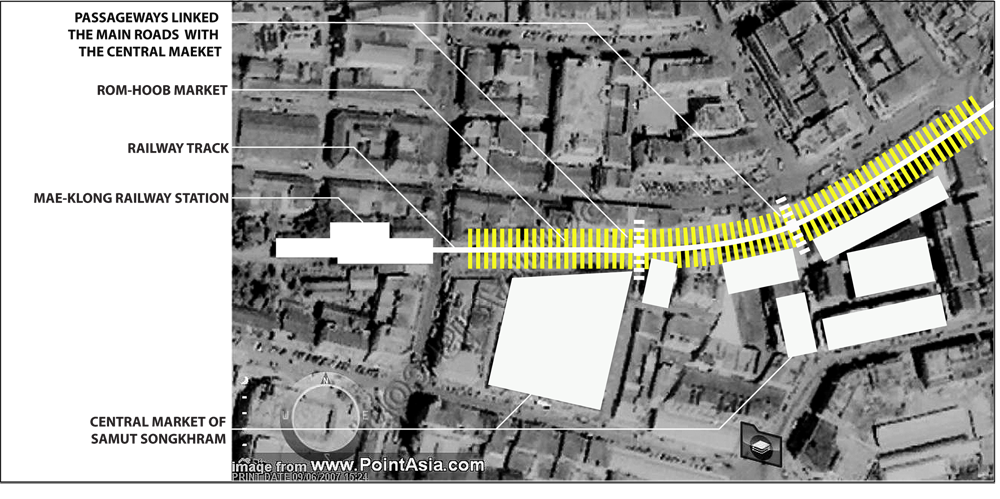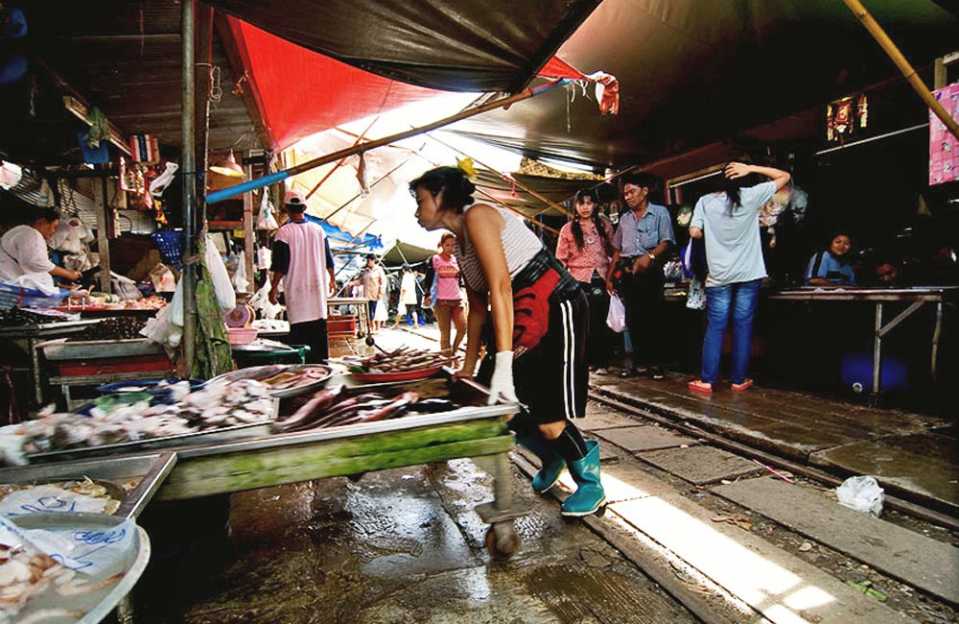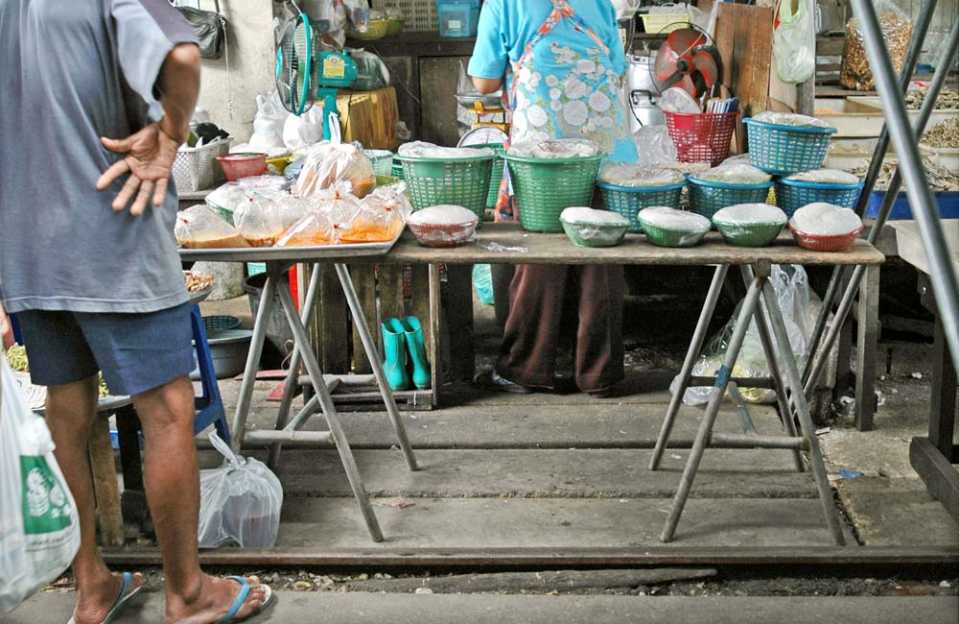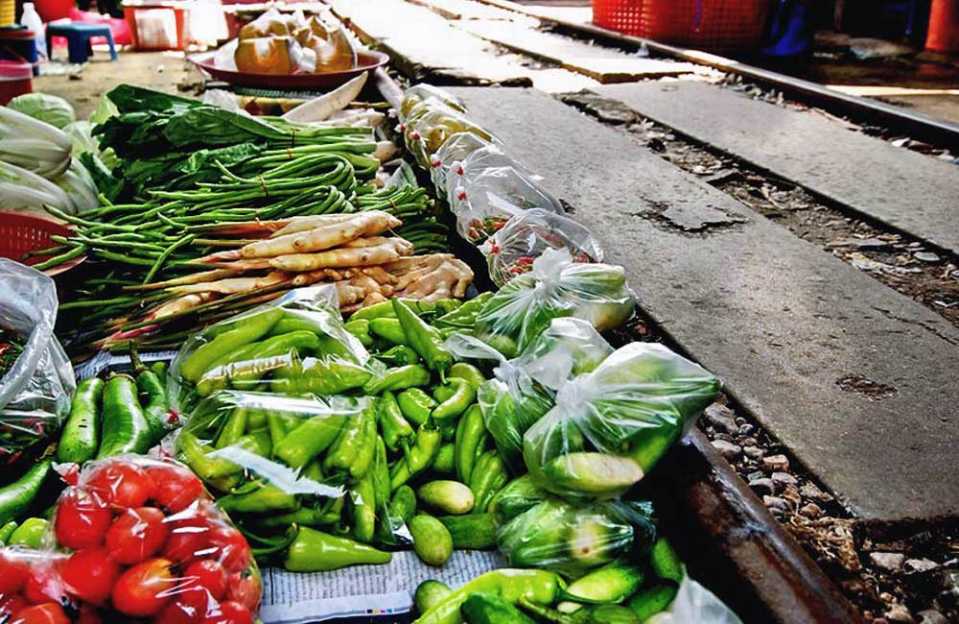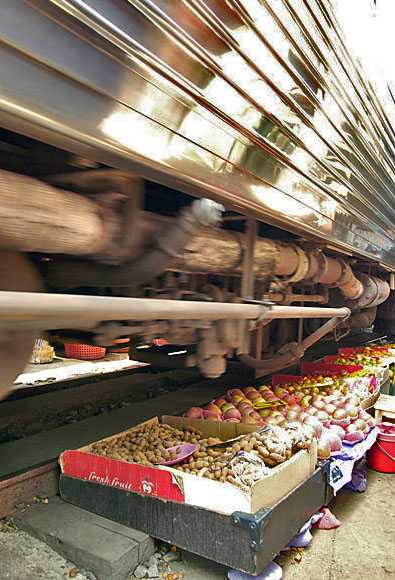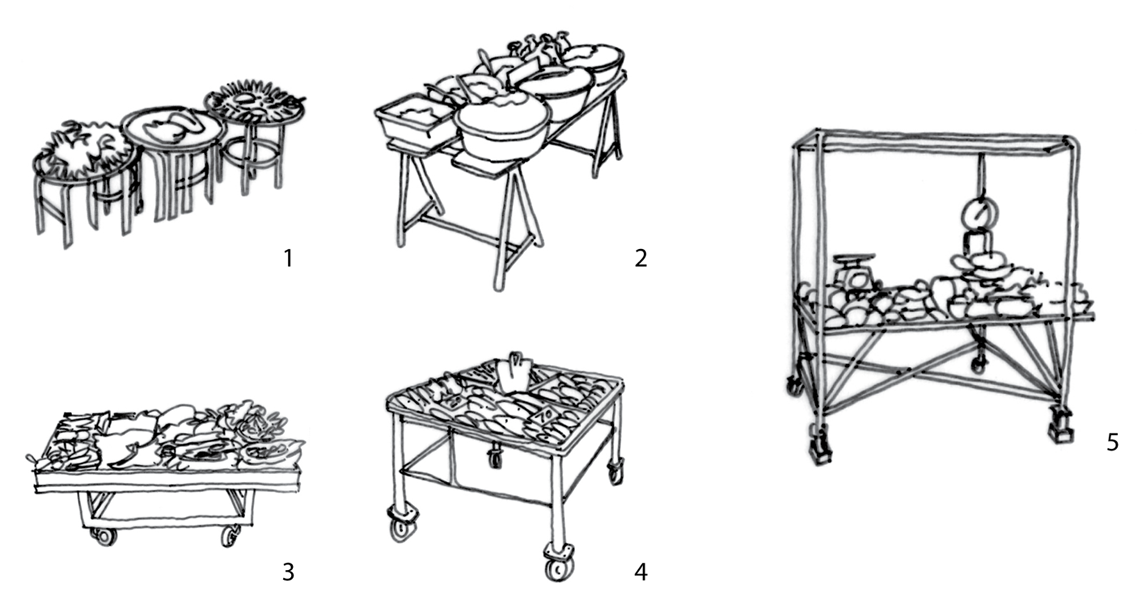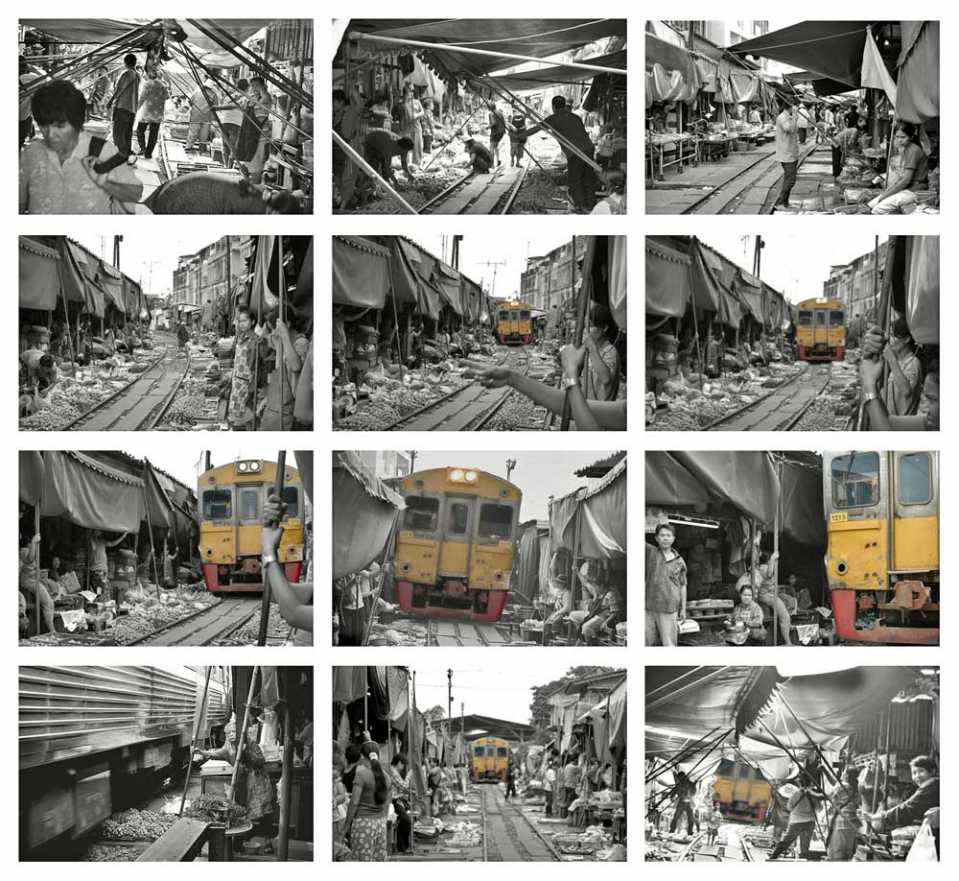Through critical examination of each stall, the relationship between the everyday architecture (occupied by its inhabitants) and the flows of space is revealed. The stalls can be categorized into several forms according to different foods and products. Vegetables and fruits are put in baskets and placed next to or immediately on top of the track. There is no need to move these baskets when the train comes as the space between the wheels allows it to pass completely over the baskets. Seafood, chili paste, or light weight products are laid on small tables, which are readily assembled from a piece of wood and metal stands. These can be easily dismantled, lifted up and moved. Heavier products, such as meats or household items, are placed on bigger and stronger stainless-steel tables with wheels attached. These tables are custom made and come in different sizes. They can slide in and out when the train passes through and are simply operated by hand. Most sellers, however, prefer to sit on the floor or existing railings, as in one view, it is more convenient and easier to move when the train comes.
As shall be seen, this place is considered a space of common sense, of social practice, and a space that enshrines everyday discourse where design simply and completely follows function and combines with the flows (of communication, goods, vendors, buyers, and, in particular, the flows of the trains). The stalls and temporary structures designed by locals are essentially affected and formed by the movement of trains that are flowing in and out of the Mae-Klong station, as well as bounded by the human body in movement though this fluid space. These movements can be seen as a means of experiencing everyday space and as the paths that emerge in relation to the space (as place-based) of flows. It is likely that this place can also be considered an architecture of events, as much as an architecture of spaces. It is unmediated, as specified by real moment and real bodies in real space. This forms an organization of events within the space of flows, where functions, activities and programs are merged. The meaning of the space is dynamically revealed and reconfigured through the everyday activities which are also important barometers of socio-spatial practice of the site. Finally, this in turn informs the language of the architecture within this context and how inhabitants construct their everyday lives.
read more...
read more...
read more...
read more...
read more...
read more...
read more...
read more...
read more...
read more...
read more...
read more...
read more...
read more...
